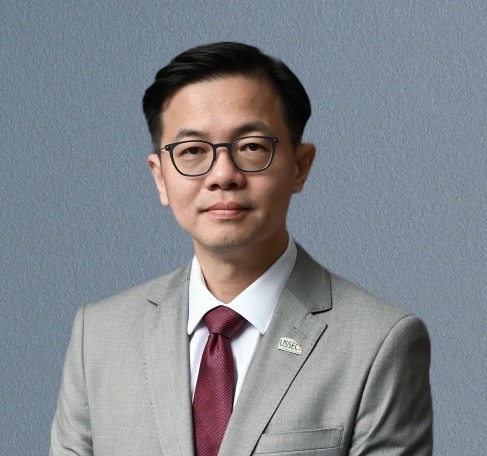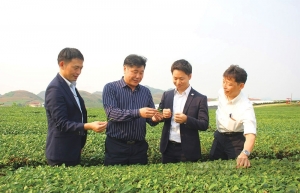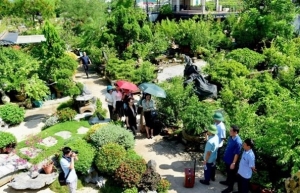USSEC contributes to upgrading Vietnam’s agricultural sector
Can you share some highlights of the conference?
 |
| Timothy Loh |
The SE Asia US Agricultural Cooperators Conference, which coincided with President Biden's recent visit to Vietnam, cast a spotlight on the US - Vietnam relationship as key trading partners working together to achieve the shared goals of growth, prosperity, and sustainable development. This conference therefore gives testament to the commitment and partnership that US growers have for the Vietnamese market and Southeast Asia, with decades of investment and support in the region’s growth and prosperity.
An impressive 1.7 million metric tonnes (MT) of US agricultural products were transacted and negotiated at the conference, of which, approximately 815,000 MT were soybeans and soybean meal. While these figures are meaningful, it is the business relationships and networking forged at this annual event that firmly establishes it as the premier agricultural event in Southeast Asia.
The US Soy industry views Southeast Asia as a valued collaborator and is invested in working hand in hand with local stakeholders for many years to come. The theme of the conference this year was Globalisation 2.0 – Building Bridges for Food Security, Sustainability and Innovation.
How would you evaluate consumption of US soybeans in Vietnam, and what opportunities do you envision for the sector?
Vietnam, a key partner for US Soy, ranks among the top pork and aquaculture producers. It is the second-largest US Soy importer in Southeast Asia after Indonesia (2023). The country's growing population, political stability, and rising commitment to sustainability offer substantial collaboration and trade prospects for the soybean value chain.
Pork production is projected to increase to four million tonnes by 2025 and 4.7 million tonnes by 2030, with an average annual growth rate of 3.6 per cent. This growth will boost demand for soybeans and soybean meal used in pig feed. The expanding aquaculture and poultry sectors will also drive demand for soy-based products in fish and poultry feed.
The USSEC's recent collaborations with feed mills in Ho Chi Minh City and Dong Nai province, Vietnam, demonstrated the advantages of US Soy-based feed for poultry and swine, highlighting the higher amino acid content and overall value of US Soy. We are also working with Emivest Feed Mill in Vietnam, providing technical support, sharing extrusion feed technology for fish feed, and highlighting the importance of quality feed ingredients and sustainable feed production.
These collaborations and outcomes underscore the USSEC's commitment to supporting Vietnam's food security and sustainable development.
How has the USSEC advanced Vietnam’s agricultural sector, equipping it to confront emerging challenges?
The US Soy industry has played a vital role in enhancing Vietnam's agricultural sector over the past 26 years. This partnership with the USSEC has involved the sharing of trade and technical knowledge, as well as expertise, aimed at supporting the growth of Vietnam's food, feed, and livestock industries. Moreover, the USSEC has simultaneously promoted US Soy as a trusted and sustainable source of nutrition.
One of the primary objectives of this collaboration is to differentiate US Soy based on its superior intrinsic value. The aim is to elevate its preference as a source of both food and feed, while striving to attain market access and provide reliable access to US Soy globally.
Additionally, the US Soy industry has been actively facilitating knowledge sharing and networking among stakeholders. This was evident at the recent Agricultural Cooperators Conference in Danang, where the latest agricultural trends were discussed and participants had the opportunity to exchange ideas and information.
How is the USSEC promoting the sustainable development of Vietnam’s agricultural sector as well as contributing to net-zero?
The USSEC is actively supporting the sustainable development of Vietnam's agricultural sector and contributing to the country's net-zero goals aligning with Vietnam's "Zero Hunger National Programme" to eradicate hunger by 2030. A significant focus of the USSEC’s sustainability efforts lies in the US Soy Sustainability Assurance Protocol (SSAP) certification, a globally recognised and accredited sustainability verification programme, providing certified shipments for sustainably produced US Soy. Adoption of SSAP in Southeast Asia has risen from 19 per cent in 2019 to 80 per cent in 2023, reflecting USSEC's dedication to sustainability amid growing concerns about sustainability, climate change, and deforestation.
The USSEC's proactive approach extends to collaborations with key Vietnamese organisations, such as the Vietnam Association of Seafood Exporters and Producers and the Vietnam Business Council for Sustainable Development, aimed at strengthening sustainability sourcing and supply chain practices.
Additionally, we are partnering with local feed miller and food producers to promote the Sustainable US Soy (SUSS) label. The SUSS logo represents the customer’s commitment to sustainability throughout the value chain. Through these initiatives, the council plays a vital role in supporting Vietnam's agricultural sustainability and net-zero targets while enhancing the sustainable production and utilisation of US Soy in the region.
The foreign investment inflow in Vietnam’s agricultural sector is still limited. How can things be improved?
Enhancing foreign investments in Vietnam's agricultural sector requires a multifaceted approach that includes embracing free trade, fostering globalisation, and promoting sustainable practices. The comprehensive strategic partnership between Vietnam and the US is expected to boost bilateral trade, particularly in the agriculture sector. Trade between the two countries reached $130 billion in 2022, with $10 billion attributed to agriculture, highlighting significant growth potential.
This growth in trade underscores the opportunity for knowledge exchange, technology transfer, and agricultural innovation, which can help create a robust and sustainable industry. By aligning economic growth with responsible and sustainable practices, Vietnam can position its agricultural sector as a strong and resilient contributor to the country's economy and the global community, thereby attracting foreign investment and contributing to the nation's long-term growth and prosperity.
 | Japan at fore of experience in agriculture High-tech agricultural development is set to be intensified between Vietnam and Japan. |
 | Hanoi moves to tap riverside agri-tourism potential With its great potential for ecological agriculture and tourism, especially in riverbank areas, Hanoi has paid attention to developing riverside agri-tourism models. |
What the stars mean:
★ Poor ★ ★ Promising ★★★ Good ★★★★ Very good ★★★★★ Exceptional
Related Contents
Latest News
More News
- TCP Group partner with VNUS to launch water conservation project (December 25, 2025 | 14:00)
- Heavy industries set for pilot greenhouse gas quotas (December 25, 2025 | 10:00)
- Swedfund invests in MSME growth and climate action in Vietnam (December 19, 2025 | 11:42)
- GreenYellow brings solar energy to light up remote schools in Tuyen Quang province (December 19, 2025 | 08:00)
- Charge+, Grab partner to develop EV charging network in Vietnam (December 18, 2025 | 17:11)
- Linking sci-tech and innovation to Vietnam’s net-zero future (December 18, 2025 | 14:31)
- Driving double-digit growth through green and circular transformation in Vietnam (December 17, 2025 | 09:00)
- Standard Chartered and ACCA deepen collaboration to develop Vietnam’s talent for a sustainable future (December 15, 2025 | 18:18)
- Schaeffler reports strong early output from Dong Nai solar project (December 12, 2025 | 15:16)
- Forestry conference highlights biodiversity and sustainability goals (December 09, 2025 | 13:35)

 Tag:
Tag:





















 Mobile Version
Mobile Version